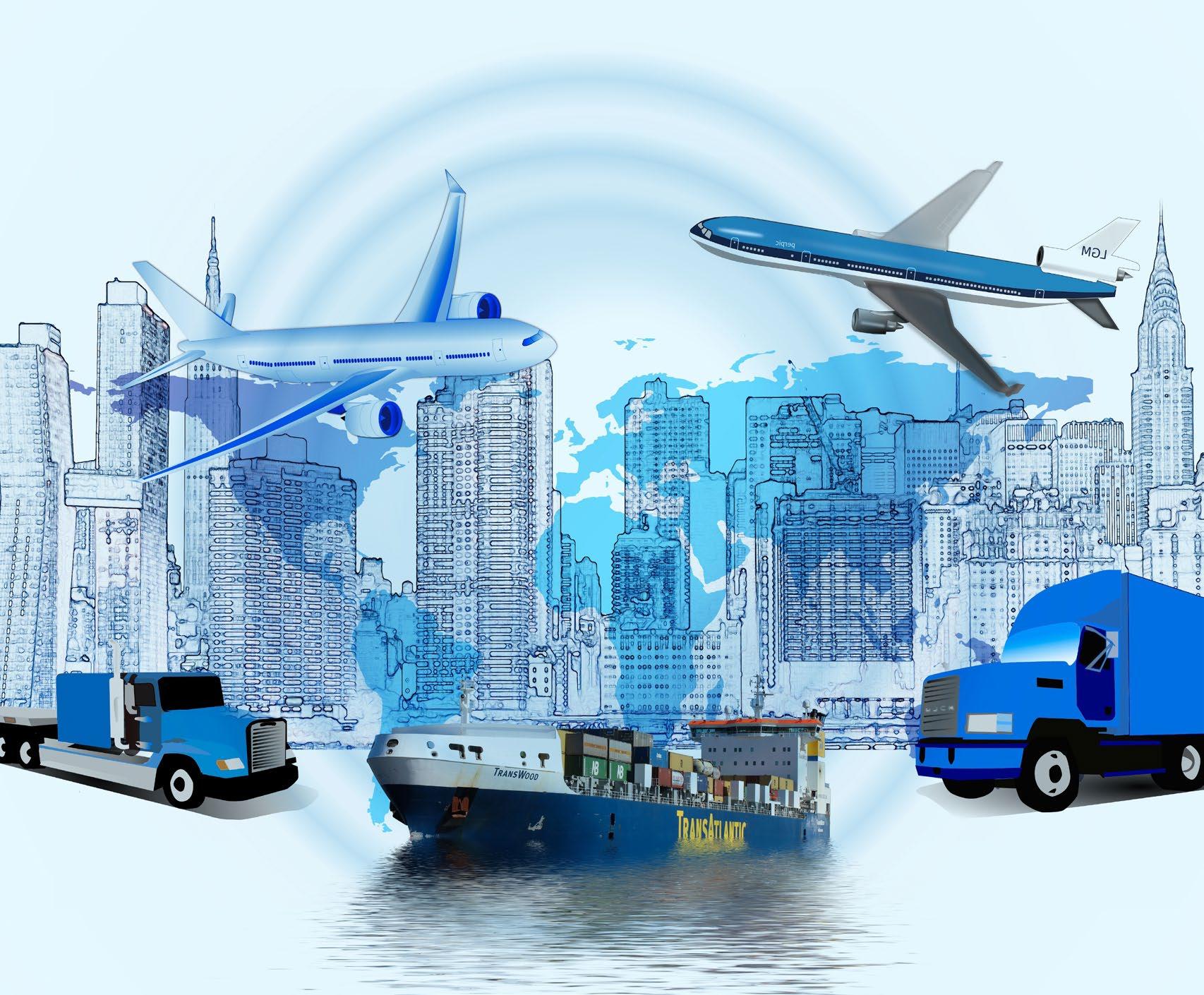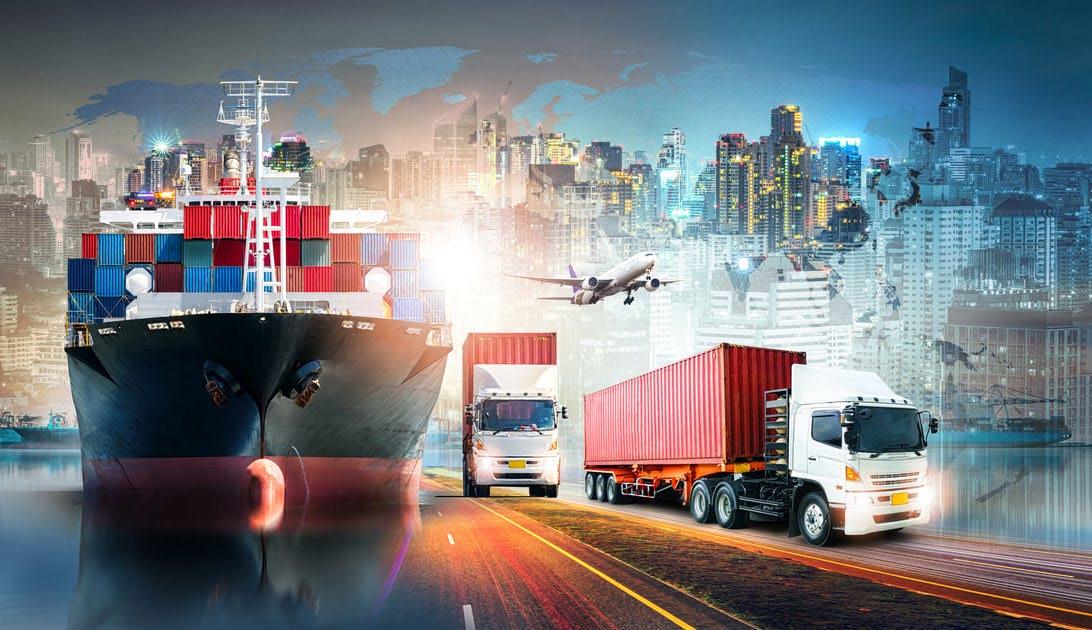
6 minute read
Logistics Companies Apply Lessons Learned
BY: DAVID HODES
The pandemic has given logistics professionals a different disruptive event to learn from – and they are responding with better service for their customers
The last three years have been tricky for all businesses. But freight movement and transportation in general has been particularly hard hit. The logistics guys have had to get creative. ............................................................................................................
Getting freight from point A to point B during one of the most disruptive events they have ever faced—the Covid pandemic—has provided both clarity of their business objectives to their customer, and plans for dealing with something as profound as that event happening again.
Mitch Luciano, president and CEO of Ocean Carrier Trailer Bridge, writing in Forbes magazine, outlined three things that will occur post-pandemic:
1. Digital disruption has become an explosion. Most executives plan to continue making their companies increasingly digital and virtual, especially if they lead large organizations.
2. Work will become more flexible and employee-oriented. Research by PriceWaterhouseCoopers found that 78 percent of CEOs believe that remote work and collaboration will remain after the pandemic; 61 percent felt that low-density workplaces are here to stay; and 58 percent said supply chain safety would be an enduring issue to contend with, making safety a priority over speed.
3. Companies will broaden their production bases. Many business leaders have recognized that extended and complex supply chains are vulnerable. As a result, many companies are making plans to shorten supply chains through nearshoring or reshoring and fewer imports. According to a Foley and Lardner survey, 43% of companies currently operating in China either already have or are planning to move operations to another country, such as the U.S., Mexico, or Canada. Seventy percent agree that companies will, as a result of the pandemic, lessen their focus on sourcing from the lowest-cost supplier in favor of higher supply chain resiliency.
Vanessa Miller, co-chair of Foley’s Coronavirus Task Force and co-chair of the Supply Chain Team, said the principal lesson from the pandemic—the wake-up call, really—might simply be that such disruptions are an unshakeable reality, and that executives must have a proactive strategy if they hope to head them off.
“The number of disruptions that we’ve seen in the last decade are frequent,” Rick LaGore, cofounder and CEO, InTek Freight and Logistics, told BXJ. “And they’re more painful in nature. Now, of course, the pandemic has been the biggest one. And it’s really thrown around a lot of the C-suite folks into the world of supply chain. It’s usually been thought of as a cost center. Although if you look at some of the best companies out there, Amazon being one of them, they built their competitive advantage off of their supply chains,” he said. “We see shippers out there that are really working to build their supply chains as a competitive advantage instead of being a cost center.”
Exploring Solutions
Coming to the rescue is updated automation and digitization efforts that should help smooth things over and accelerate freight activity.
One example comes from the collaboration between DHL Supply Chain and Boston Dynamics. DHL is the global and North American contract logistics leader within Deutsche Post DHL Group. In January, 2022, DHL announced a $15 million investment in robotics solutions from Boston Dynamics to further automate warehousing in North America. The two companies have signed a multi-year agreement that begins with equipping DHL facilities with Stretch, which is the newest robot from Boston Dynamics specifically designed to automate the unloading process in distribution centers.
Under terms of the deal, Boston Dynamics will deliver a fleet of Stretch robots to multiple DHL warehouses throughout North America over the next three years.
This collaboration is part of DHL Supply Chain’s Accelerated Digitalization agenda, a strategy for developing and scaling innovative solutions and new technologies, according to a press release. Stretch will tackle several box-moving tasks in the warehouse, beginning with truck unloading at select DHL facilities. Following the first deployment, the multi-purpose mobile robot will handle additional tasks to support other parts of the warehouse workflow, which will effectively automate warehouse operations.
DHL was one of the early adopters of augmented reality (AR) and virtual reality (VR) in their warehousing and logistics operations, using smart glasses for workflow guidance in the picking process, with pilot projects already completed in 2014.
There is a newer trend underway at DHL called Extended Reality (ER) that brings together the different experiential technology of AR, VR, and mixed reality (MR). DHL explains that AR enriches the physical world with purely visual digital screens or overlays in the right place at the right time; VR is a fully immersive digital experience requiring special headsets; and MR is at the intersection of both, infusing interactive virtual content within the physical world.
“What we’ve seen so far this year, beginning at the end of last year, is a lot of interest in people trying to figure out what’s going on and where the freight is, and why am I spending so much and how can I spend less and how can I be more efficient in terms of talking to more carriers to better optimize service price,” LaGore said. “So we’ve seen a lot of movement towards software technology platform at this point. We see that continuing to accelerate through this year, as people want to better prep themselves for the next disruption.”
A Missing Link?
Logistics relies on various forms of freight—trucks, ships, trains. But a critical link in that chain is getting air cargo in the mix, coming on strong as a result of exponential growth of e-commerce.
A study of 50 U.S. cargo airports, air cargo carriers, and the logistics and e-commerce sectors explored a consolidated airport, air cargo, and e-commerce relationship, especially in the pandemic period.
Airports and air cargo carriers are identified as the most relevant partners in the e-commerce industry because consumers in e-commerce demand speed and reliability in the interaction between the demand and supply of products and services. “We can forget that the e-commerce industry provides large revenues to airports and carriers, and that this sector has not stopped growing in the past 10 years,” the study reported.
After an extensive literature review, several indicators were identified as driving factors of e-commerce at an airport: a good geographical location of the airport; a cargo market close to the airport; international connectivity; efficiency of operations; personalized services by airports and carriers; optimized synchronization of traffic flows; and frequencies of flights by air cargo carriers. “Airport operators and air cargo airlines are developing new co-operative approaches to service provision in the e-commerce market. Airport operators need to diversify their business models,” the study added.
The study concluded that the pandemic has changed the way in which organizations operate, and it is likely to create new demands for the aviation and e-commerce industries. “These two sectors are highly dependent on their commercial interaction relationship, because they provide products and services of primary necessity such as food, pharmaceuticals, electronics, perishables, and urgent shipments. We should be aware that recovery will not be immediate or result in an instant return to the record 2019 figures.”
The Reset is Underway
The logistics industry is quickly recovering and resetting from the 2019 downward spiral triggered by the pandemic.
For example, the largest global logistics company, DHL Supply Chain and Forwarding, had revenue of around $82 billion as of 2021, employing 550,000 people worldwide. Revenue for the DHL group of companies was up 22.5 percent to $86 billion, representing the highest revenue in the group’s history.
The largest U.S. logistics company, United Parcel Service, had a reported revenue of $100 billion in 2022, an increase of 3.14 percent from 2021. Revenue in 2021 was up nearly 15 percent from 2020.
The transport and logistics industries are expected to grow to approximately $171.9 billion by 2027, and increase its workforce by 4.6 percent.

Despite promising success and growth, external issues this year, including inflation and supply chain disruptions, have led to the emergence of several challenges that the industry will need to tackle in 2023, according to an article in Forbes.
Those challenges include labor shortages, natural disasters, managing new customer expectations such as same-day delivery, the rising costs of warehousing, and the demand for sustainable deliveries.
There are other considerations as well, including geopolitical tensions and trade disputes.
“We’ve definitely seen a business slowdown,” LaGore said. “We’ve gone through the craziest 18 to 20 months of supply chain challenges trying to help customers get their freight from point A to point B without having too many surcharges, and charges put on them for containers being in the wrong place at the wrong time, or are just sitting there.
“Right now the direction that we’re really pushing for this year is to help those customers that want help the most, which is those that are really looking to improve their supply chains, better balance truckload intermodal, better balance ports they’re coming into, because that was one of the other big things that we learned during the pandemic,” he said. “So our direction this year is really trying to help customers. They may be asking for X-Y-Z, but they may not understand what they’re really asking for. So we’re trying to dig deeper into their questions to come up with a more holistic answer for them.” X










